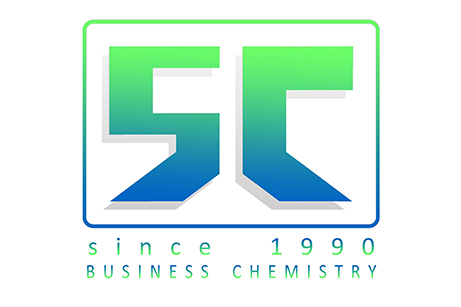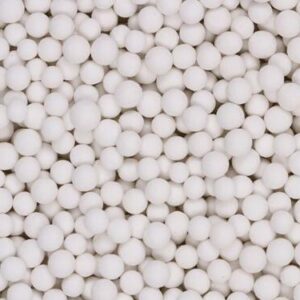Description
Gasoline Sulfur Reduction Additive
Description
The physicochemical property of the additive is similar to cracking catalyst. It has fairly good
fluidization property and appropriate cracking activity. Therefore, it can be directly blended
with cracking catalyst and has no obvious detrimental impact on FCC operation, catalytic
performance, or product distribution. The additive can remove 20~40% of gasoline sulfur,
even when the E-cat has high nickel and vanadium contents. This is accomplished by catalytic
cracking of the sulfur-containing molecules into hydrocarbons and H2S without negative effect
on product yields.
Since the additive can reduce sulfur content in FCC gasoline in-situ, the cost for FCC feedstock
hydrotreating or further treatment of gasoline can be saved. For example, one refinery saved 1.68
million USD by processing cheaper feedstock containing more sulfur and more residues.
Application
MS011/MS012
FCC Additive for reducing sulfur content in gasoline
Light Olefins Production Additive
Description
To maximize the C3/C4 ratio in LPG, the MP/P-MAX Additive uses bi-element-modified ZSM-5
as the active component. Together with the matrix stabilization technology, the additive converts
gasoline olefins to light olefins, especially propylene.
The FLOS Additive adopts multifunctional zeolites including β zeolite for the isomerization
and cracking cascade reactions. It also uses matrix modification to enhance large-molecule
isomerization and hydrothermal stability. Specifically, it converts diesel and gasoline into
propylene and isobutene.
The additives can effectively increase propylene and butylene to provide feedstock for light
olefin units to produce value-added products, which increase the overall economic benefit of a
refinery.
Application
MP051/P-MAX/FLOS
MP/P-MAX series Additives are designed to increase propylene.
FLOS Series Additive is designed to easily tune the propylene-to-isobutene ratio and
increase light olefins.
High Gasoline Octane-Barrel Additive
Description
HOB-A Additive is an efficient additive for increasing octane number and octane-barrel of
gasoline. With delicate design of the structure, HOB-A can promote diesel and heavy oil
conversion to increase gasoline yield, enhance low octane number C6~C8 olefin cracking,
increase C5 selectivity in gasoline and favor isomerization with increasing (RON+MON)/loss of
gasoline for high gasoline unit.
Application
HOB-A
HOB-A additive is designed for gasoline production with high octane-barrel.
CO Combustion Promoter
Description
The Pt/Pd active component is loaded on the matrix by proprietary impregnation technology,
with carefully-controlled PH value, to improve dispersion and oxidization activity. The novel
alumina matrix is modified to further improve activity and hydrothermal stability of the promoter.
Pt or Pd content of the additive can be adjusted from 100~500 ppm to obtain CO oxidization
activity level and meet the requirement of different units. For Pt-based promoter CO-CP (Pt), CO
promotion index is the main parameter; for Pd-based promoter CO-CP (Pd), CO promotion and
NOx emissions are usually balanced.
Application
CO-CP
CO-CP series promoters are used in most FCC/RFCC units to accelerate the
combustion of CO in dense-phase beds to generate CO2 and avoid the “after burn” of
CO.
Flue Gas NOx Reduction Additive
Description
RDNOx series additives are designed with multi-metal elements as active component with a
highly stable matrix, which exhibits high catalytic activity and selectivity for reductive gas-phase
nitrogen compound (especially NH3) conversion. RDNOx series additives can be used in full or
partial burn units. RDNOx-I and RDNOx-II are developed for full-burn units, so that CO promotion
and NOx reduction can be well balanced.
For full-burn units, NOx reduction can reach 80%-90% with well-balanced CO promotion and
NOx reduction. For partial-burn units, NOx reduction can reach 30%-40%, and NH3, NOx, and
CO emissions can be controlled simultaneously, which will be helpful to meet more stringent
emissions regulations.
Application
RDNOx
RDNOx series additives are designed to reduce NOx emissions from FCC flue gas,
which decreases the load of after-treatment units (SCR, LoTOx, etc.).
Flue Gas SOx Reduction Additive
Description
The RFS09 SOx Transfer Additive uses advanced matrix technology with dual-pore structure
modified magnesium aluminum spinel to improve adsorption and regeneration performance. A
new, continuous impregnation method has been developed to improve the dispersion of active
components and greatly improve the sulfur transfer properties of the additive. By optimizing
the oxygen storage component and MgO content, the SOx capturing ability is improved, which
enables higher SOx removal efficiency, even at low excess oxygen level.
The additive can also reduce or even eliminate secondary pollution, like blue smoke plume and
high total dissoluble solid (TDS) wastewater caused by a wet gas scrubber.
For most full-burn units, SOx emissions can be reduced by over 90%. For partial-burn units, SOx
emissions can be reduced by 50%–70%.
Application
RFS09
The additive is designed to solve the problem of SOx emissions from FCC flue gas.








Reviews
There are no reviews yet.